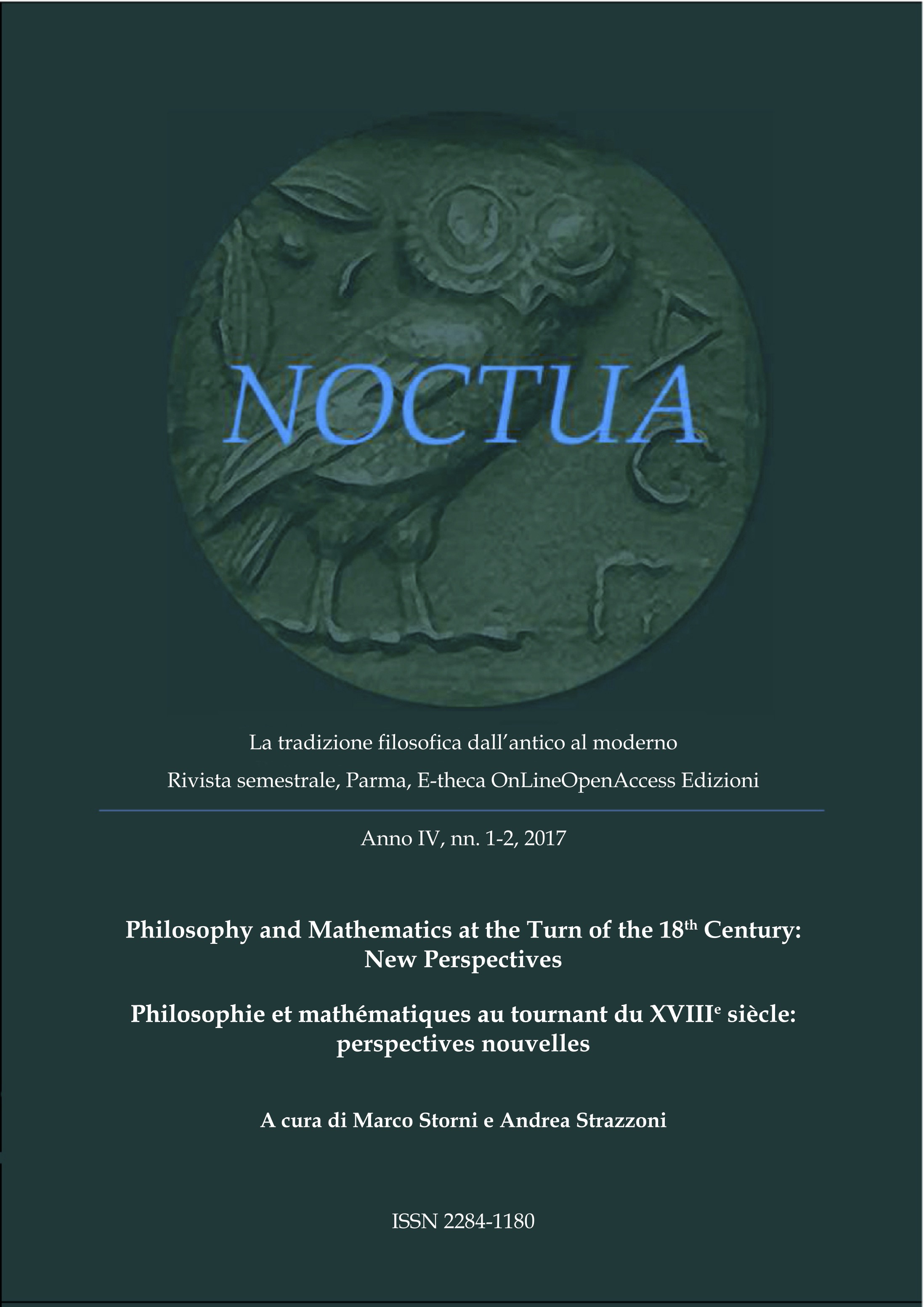The Tension Between the Mathematical and Metaphysical Strands of Maupertuis’ Principle of Least Action
DOI:
https://doi.org/10.14640/NoctuaIV3Parole chiave:
mathematics, metaphysics, Pierre-Louis Moreau de Maupertuis, principle of least action, theologyAbstract
Without doubt, the principle of least action is a fundamental principle in classical mechanics. Contemporary physicists, however, consider the PLA as a purely mathematical principle – even an axiom which they cannot completely justify. Such an account stands in sharp contrast with the historical meaning of the PLA. When the principle was introduced in the 1740s, by Pierre-Louis Moreau de Maupertuis, its meaning was much more versatile. For Maupertuis the principle of least action signified that nature is thrifty or economical in all its actions, i.e., that nature avoids to do anything unnecessary. Maupertuis understood the principle in teleological terms and even considered the principle as an expression of God’s wisdom. It has been correctly pointed out by historians that Maupertuis in his later years moved towards a more speculative and metaphysical approach, whereas his contemporary Euler and later Lagrange, wanted to avoid such theological and metaphysical implications and frame the PLA (in line with contemporary standards) in purely mathematical terms. Such readings, however, have had the unintended side-effect that they lose out of sight the question how the mathematical and metaphysical aspect of the principle of least action fit together within Maupertuis’ own work. Investigating if and how the mathematical and metaphysical aspects of the PLA are compatible within Maupertuis’ thought will be the main goal of this paper.
##submission.downloads##
Pubblicato
Fascicolo
Sezione
Licenza
Noctua pubblica contributi Diamond Open Access secondo i termini della licenza CC BY / Noctua publishes Diamond Open Access contributions under the terms of the CC BY license.






